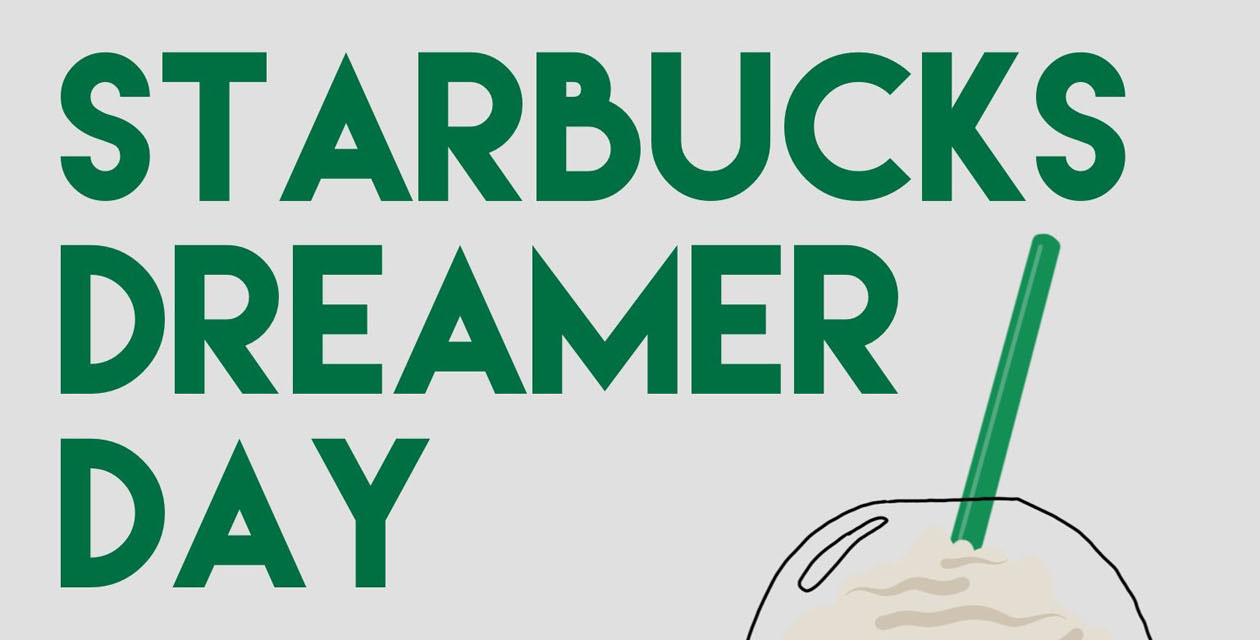Maybe design really will change lives.
Last week, some 4chan users cooked up a plan to declare Aug. 11 "Dreamer Day," inviting undocumented people to stop by a Starbucks to get 40 percent off a Frappuccino—at which point one of the 4chan members would notify ICE to raid the store. However, once they started spreading the word about "Dreamer Day," people questioned whether it was real and Starbucks confirmed it wasn't. At least for now, this particular hoax appears to have ended before it began.
It may have been the images accompanying the hoax that tipped off so many people that this wasn't real. While planning the scheme, 4chan users created a few fake ads to promote the hoax. Here's the one they liked the most:

Many users felt it was pretty well above suspicion:
I actually really like it. Fits the style of Starbucks ads well. They love hipster hand drawn crap.
Which, sure. But Twitter noticed some problems with one of the other images that made its way to the public:
They even spelt 'frappuccino' wrong pic.twitter.com/n8p9d4jZ9U
— liv (@mermaidlivv) August 6, 2017
Behind the scenes, not all the community members were on board with the ad. Some were more discerning than others:
Actually the worst. Obvious fake. Should have only stuck with the first two, now the op is dead.
And that user is mostly right, except none of the ads were particularly believable. A scan through the community's other fake ads shows an apparent—though, let's face it, not totally absent—lack of a design eye. None of these ads, in their present form, look as if they were produced by Starbucks. Anything and everything that comes out of a corporation like Starbucks would have been developed by a professional creative team, reviewed by proofreaders and lawyers, and passed through any number of checkpoints before its eventual release to the public. But a closer look at the 4chan users' preferred ad shows some obvious problems.
Such as this kerning, which you could drive a bus through:

Send this back through proofreading:

Widow alert:

Disclaimers feel a bit sparse for most corporate legal teams:

But what should be concerning to anyone is that these are all fairly minor design flaws. Fix them, and this image might have passed most people's sniff tests, which is the first thing a hoax must do if it's going to spread beyond closed-door groupthink. If enough people in the population can look at a thing and assume it's real—because nothing otherwise seems "off" about it—they'll naturally share it, and that's when the hoax performs as intended.
As with the fake Obama video, this stuff is only going to get more believable over time. But how long until design software auto-adjusts the types of errors listed above? How long will it be until creating and distributing viable hoaxes is something practically anyone can do, with relative ease?
Let's say: two years. Or just in time for the next presidential election.
